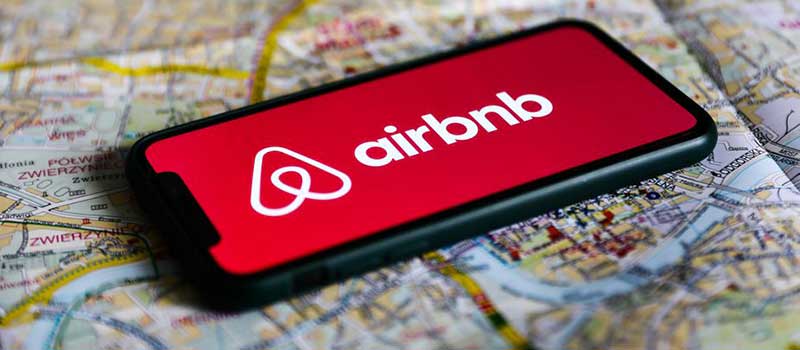The old adage goes that you shouldn’t judge a book by its cover.
But, let’s face it, we’re all human.
A good book cover could go a long way to attracting a potential reader.
Extrapolate this to branding.
Of course, a brand is so much more than its visuals.
But, crafting a consistent and compelling visual identity for a brand to help it stand out in a competitive marketplace can help appeal to your target audience.
To craft that visual identity, a brand manager must implement a brand design strategy.
Let’s explore what brand design is all about and support that with some stunning examples showcasing brand design done well.
What Is Brand Design?

Simply put, the process of brand design develops a brand’s visual identity.
This process involves developing a cohesive system of design components such as logo designs, brand colors, typography and fonts, images, photography and more.
Through all these design elements, brands can mobilize their strategy and can convey the brand personality using attributes to shape the audience’s mind.
However, as with all important decisions, choices related to the design of brand elements should be informed by market research and a fully developed brand strategy.
Before the design of any brand, critical questions need to be asked and answered.
Who is the target audience?
Who are the competitors?
How are we different?
Why should they care?
What’s our personality?
What attributes will we communicate?
What’s our message?
What’s our story?
A good brand strategy will first answer these questions which then inform the design of the visual identity accordingly.
Therefore, we can think of visual identity as the well-informed aesthetic representation of a brand’s positioning and personality.
In other words, it’s kind of a big deal!
Why is Branding Design Important?

This one shouldn’t be a puzzler.
Brand builders want to connect their brand with the audience.
They want to create an image in the audience’s mind so that they feel something for the brand whenever they come into contact with it.
Perhaps they want the audience to feel that the brand is trustworthy, reliable, and built upon a long history of service to consumers.
Or maybe they want the audience to feel that the brand is innovative and quirky, bold and disruptive, and looking to ruffle some feathers?
Would these two brands look and feel the same?
Of course not!
A strong brand will communicate its meaning through everything that the audience experiences which includes the brand’s visuals.
When done well, an effective brand identity design will help evoke feelings and create perceptions for our target audience, helping to make a meaningful connection.
That is the importance of brand design.
PRO Brand Strategy BluePrint
Build Brands Like A Pro Brand Strategist

What Elements Does Brand Design Include?

So, you have a load of visual tools in your toolbox to shape visual identity.
However, it’s important to think of these as building blocks.
You’re building one coherent brand skyscraper, not a mish-mash of unrelated outhouses.
In other words, the building blocks need to work together in a way that makes sense as a whole.
But, what are the visual elements that constitute brand design?
Explore Brand Strategy
Programs & Tools
Logo

Your logo is the visual stamp of your company.
It will be incorporated across all touchpoints.
Depending on the business, this may include the products themselves, letterheads, adverts, marketing collateral, websites, signage, business cards, bottle caps and social media.
The role of the logo is simple.
To be memorable and to enable easy brand recognition and recall.
What shape will you incorporate?
What color palette will you use?
What attributes will it communicate?
Will it communicate tradition?
Will it communicate progression?
Answers to these questions can vary depending on the brand image you want to communicate to consumers when they see the brand’s recognizable logo.
Color Palette

Color plays a crucial role in brand design.
When creating a color palette for a brand, it’s important to consider color psychology and choose colors that complement each other while also communicating the attributes defined in your brand’s strategy and personality.
For example, it’s not an accident that financial institutions often use blue.
Barclays, American Express, PayPal, Visa, Citibank, and Bank of America. All of these major players use blue in their logos and in their branding more broadly.
That is a conscious brand design choice because blue conveys a feeling of trustworthiness in the viewer.
This is just one example of how color psychology can influence a brand’s color scheme.
That said, there’s more to the consideration of choosing a colour than just psychology, and choosing over-represented colors in your market is the bigger risk.
Typography

Fonts and typefaces can also influence the way a consumer views a brand.
Typefaces have in-build characteristics that can align to certain attributes.
It’s important to design or align the right typeface with the brand image you want to create.
Traditional or modern, aggressive or sleek, bold or elegant.
The more you understand about typography, the more you can appreciate the many design elements that can influence those 26 letters!
Illustration

How will illustration feature in your graphic design elements?
You can skillfully embed your brand attributes through illustrations.
Illustrations have the ability to communicate characteristics such as fun, weirdness, modern, futuristic, dark or light and can help to bring the story of the brand to life.
Brand illustration can add depth, character, and feeling to a company’s brand, especially through the customer experience of a website as consumers interact with content.
Photography/Video

As well as the logo, color scheme, font choice, and illustrations, another element of brand design is the choice of photography or video you use.
You should use representational imagery supporting a brand’s positioning and personality.
Increasingly, new businesses, startups, and bigger brands alike are all realizing that video will play a significant role in future content.
As such, it should be seen as another vessel through which you can communicate the brand image.
With video, you have a huge potential to keep your audience’s attention with engaging content laced with personality, making it extremely valuable in our modern marketplace where the customer’s attention is at a premium.
How Do You Execute Brand Design?

Okay, so we’ve touched briefly on the visual identity elements at your disposal.
How then do you combine all these in a neat little brand design package that makes sense to the customer?
Let’s go through four simple steps:
#1. Research Market

Don’t even think about simply cracking on with your brand design without doing the groundwork.
It’s a founding principle of brand design, that decisions should be well informed to give the brand the best chance of success.
The strength of designers is in their creative expression though, within the brand design, there need to be strategic guides in the form of strategy to ensure an effective outcome.
Understand the competitive landscape, your customer’s perspectives, the challenges they face, and how the brand aims to resonate with them.
A well-researched market provides the base ingredients for an effective brand identity design.
#2. Clarify Strategy

All brand design decisions should stem from a central brand strategy.
Therefore, brand managers should take the time to clarify the…
Brand Position
Brand Personality
Verba Identity
Brand Attributes
When a brand is designed with strategy at the foundation, the design elements that make up the identity are designed not on trends or styles, but on who the audience is, the attributes that will attract them and the perception the brand wants to create in the market.
This is the basis of an effective brand identity design.
#3. Design Brand Identity

Get down to it!
Armed with clear insights, create the design elements outlined above: logo, fonts, illustrations, photography and video, and color scheme.
Remember, these elements must seamlessly integrate together into one brand design system that, as a combination, perfectly encapsulates the brand attributes of the brand.
#4. Mobilize Brand Assets

Now that the brand manager has finalized all the design elements, it’s time to use them.
Combine visual elements in creative ways across all consumer touchpoints.
Through website design, physical storefronts, business cards, in-house communications, ad creative and mediums, social media platforms, print collateral etc.
An effective brand design process breeds consistent results and should also produce a brand style guide and brand guidelines.
This enables all employees to follow your lead and implement the brand’s visual identity whenever they create visual communication at any touchpoint.
Brand Design Examples

The visual brand is just one element of a strategic system though let’s not beat around the bush… a stunning brand identity design can turn heads and gain the right kind of attention.
Let’s take a look at some effective examples.
Casper

Casper is relatively new to the mattress game.
You may think that the mattress market may not be a great breeding ground for innovative brand design.
Think again!
The startup uses a sleek and simple yet innovative visual identity to reflect its brand promise – a comfortable night’s sleep based on an innovative product.
The color scheme is muted with comforting beiges and blues to communicate a cool and sleepy vibe.
Hand-drawn illustrations subtly add to this with playful doodles dotted here and there to combine with a minimalist look that speaks to a modern brand that knows its audience.
Airbnb

Airbnb prides itself as a provider of unique experiences through its range of homestays.
They are a people-oriented company wanting to put the consumer in charge of their holiday experiences and make them feel like they “belong anywhere”.
Their brand identity is warm and welcoming, communicated masterfully through their diverse color palette and hand-drawn illustrations throughout their branding and marketing collateral.
They also promise that the booking process will always be sleek, simple, and pain-free.
Their simple, curved, smooth logo encapsulates this perfectly, seemingly almost in motion.
The logo is actually made up of four different elements:
A head to represent the people
A location icon to represent place
A heart for love
An A for the brand name
This logo is a fantastic example of how brand meaning can subtly be incorporated into simple design elements.
Slack

The brand mission of the Slack platform is to make people’s working lives simpler, more pleasant, and more productive.
They remain professional and respectful but approach brand design with a hint of playfulness.
One way that Slack humanizes the brand is through its tone of voice.
Witty, confident, and conversational, yet always helpful and professional. Slack interacts with its users with authenticity and character.
But how do the brand visuals support its brand identity?
Well, if we take the recent logo update as an example.
Slack’s new logo is pleasingly simple: an interlinking ‘octothorpe’, a reimagined hashtag, made up of speech bubbles and lozenges, with four primary colors alongside a bold typeface wordmark.
The logo’s graphic elements are representative of the brand.
The hashtag is a standout feature of the platform’s functionality.
The speech bubbles place communication at the heart of the brand.
The four playful primary colors simplify the brand’s previous seven. They create a much more welcoming color palette.
Elsewhere, other design elements continue the simplistic, welcoming feel, with cute illustrations and icons making the platform a vibrant yet helpful workplace.
Over To You
Your brand’s visual identity is a key component in communicating your brand promise to the consumer.
All the elements of your visual identity need to be on song and singing from the same tune sheet to create a consistent brand message through visuals.
To get this right, you’ll need to go through a comprehensive brand design process, designing color schemes, logos, fonts, illustrations, and imagery that support an aesthetic system that supports the brand.
When done right, your brand design will result in visuals across all touchpoints that resonate with your audience and reinforce brand identity and values.
On-Demand Digital Program
Brand Master Secrets
Make the transition from hired-gun to highly valued brand strategist in less than 30 days. The systems, frameworks and tools inside this comprehensive program are all you need to level up.







